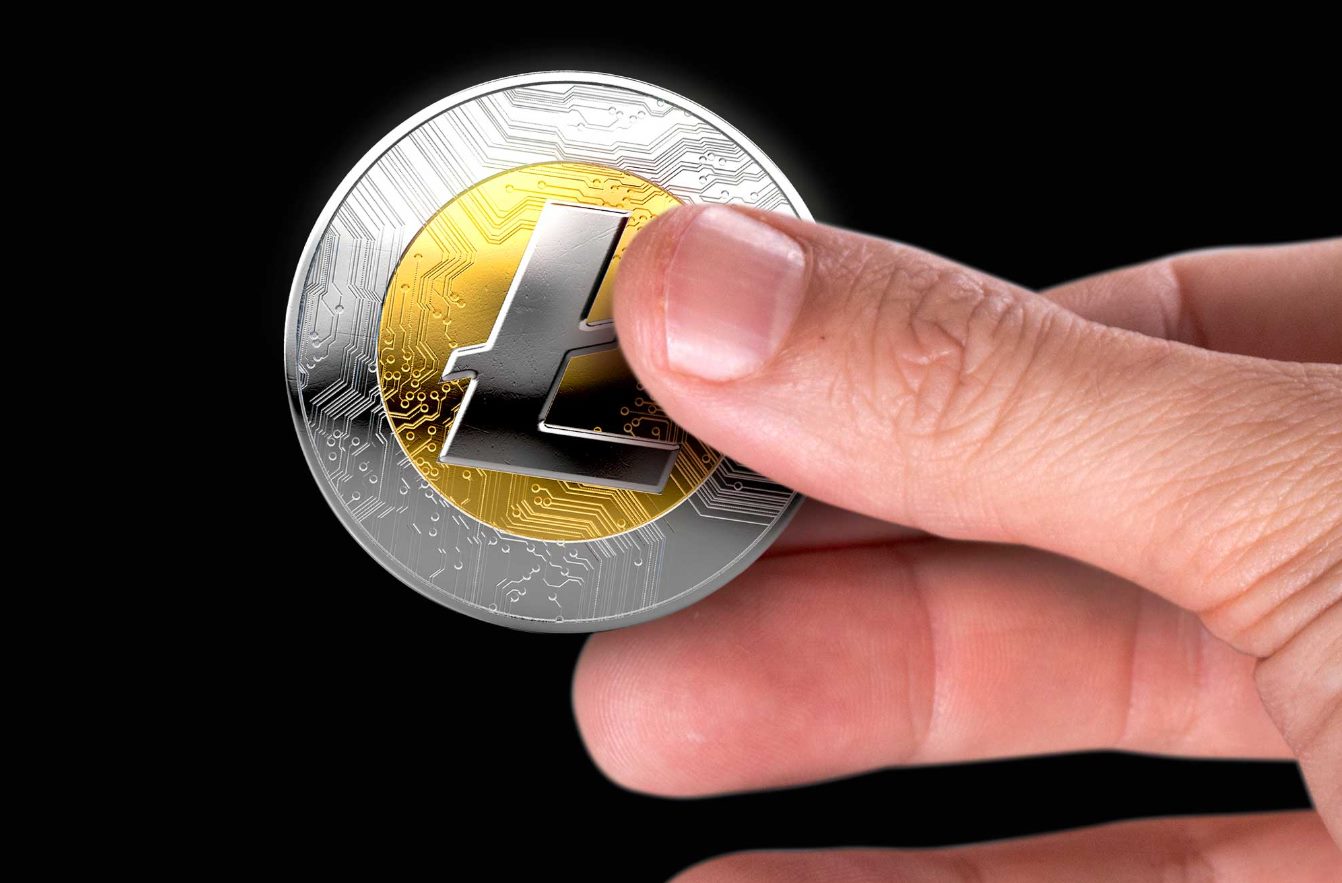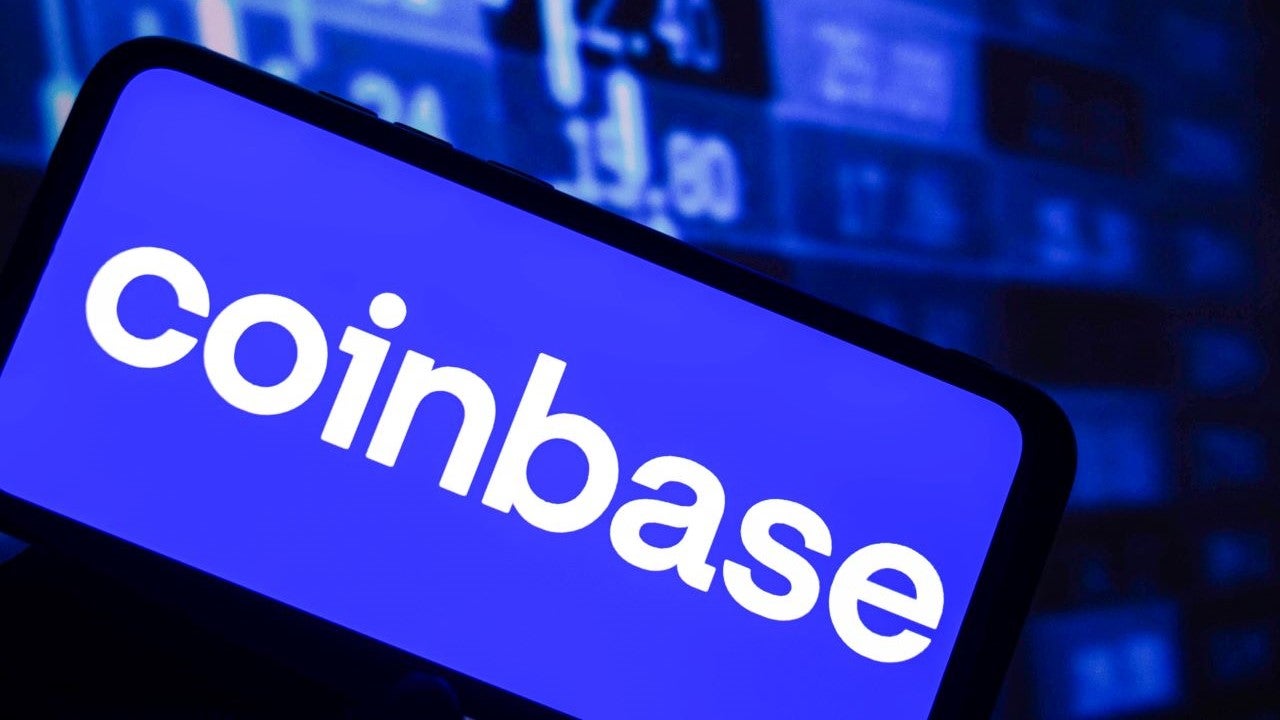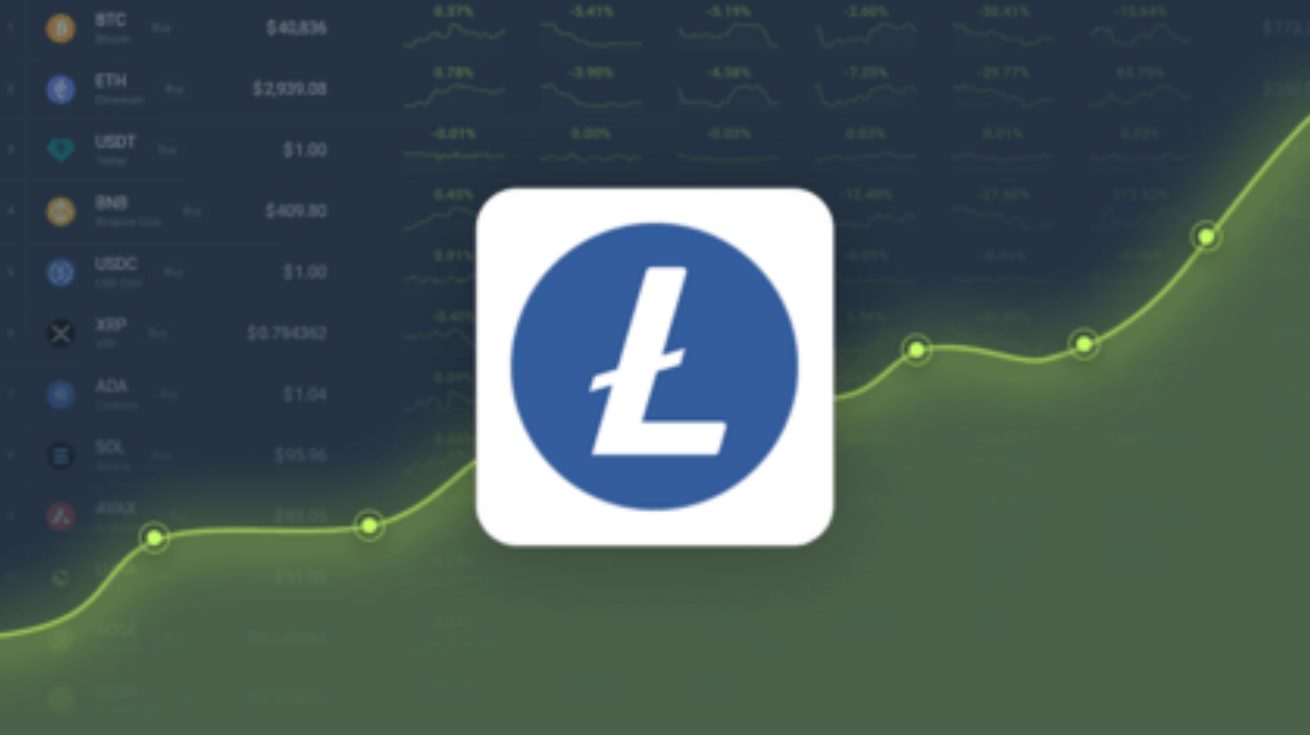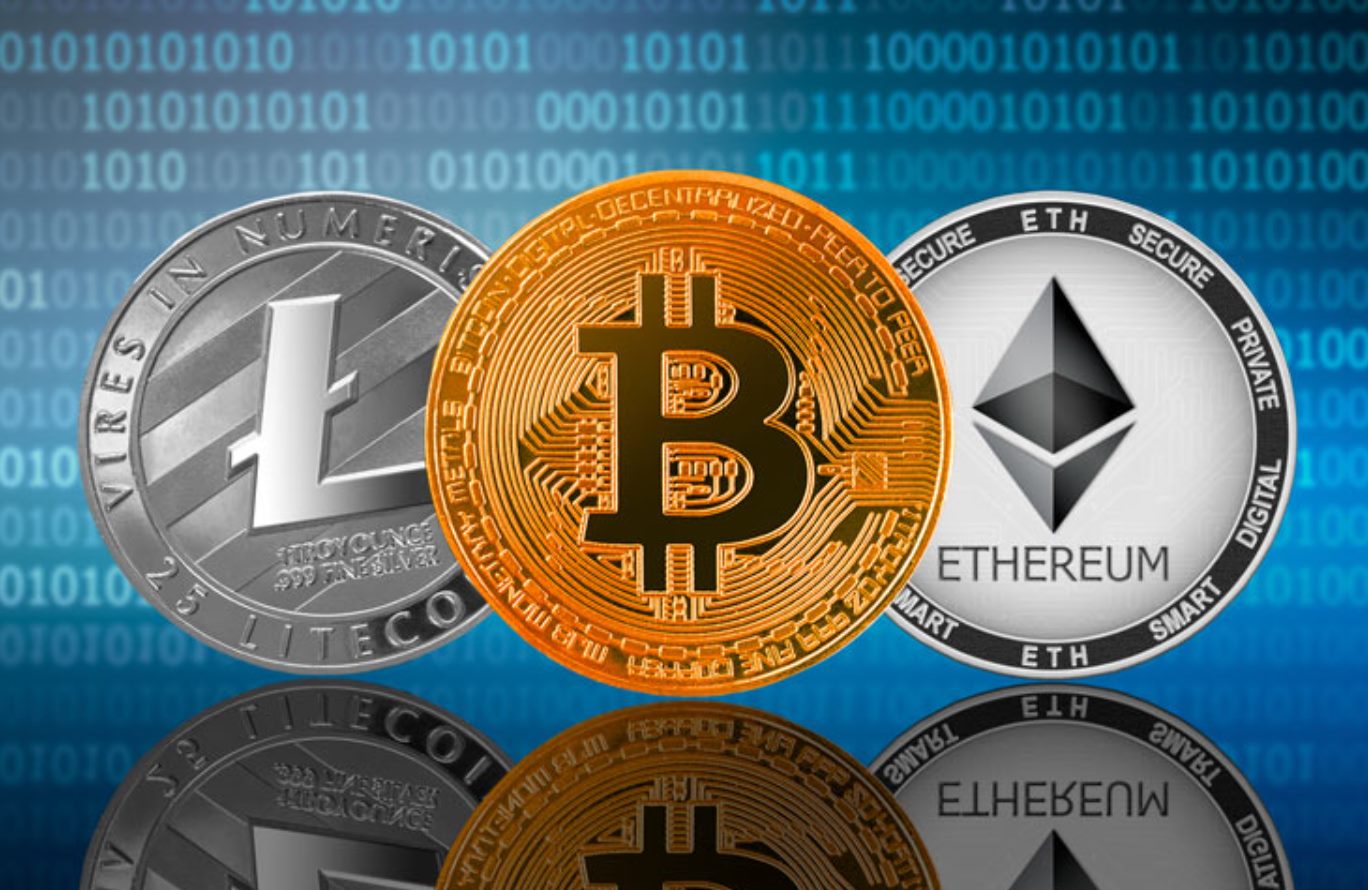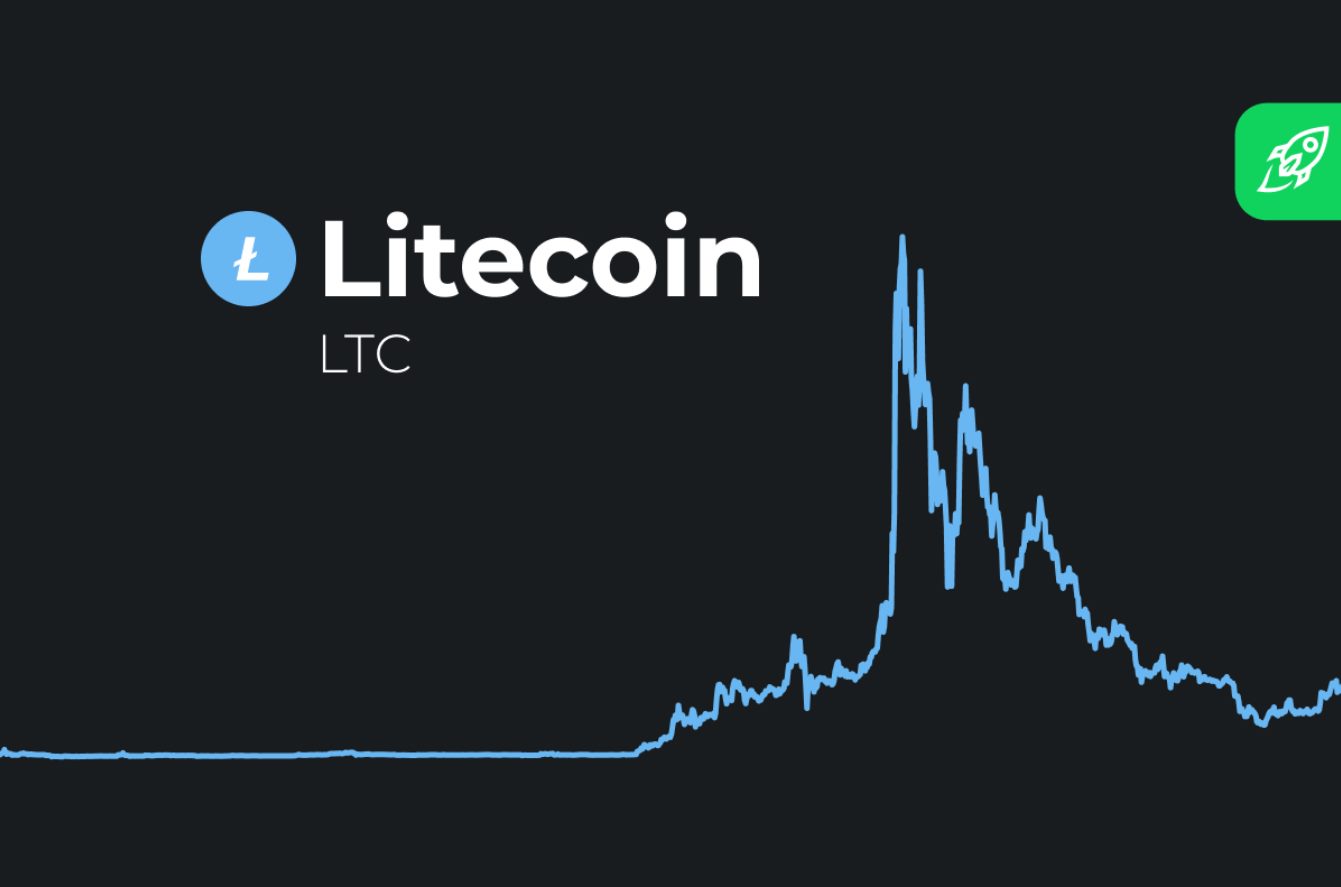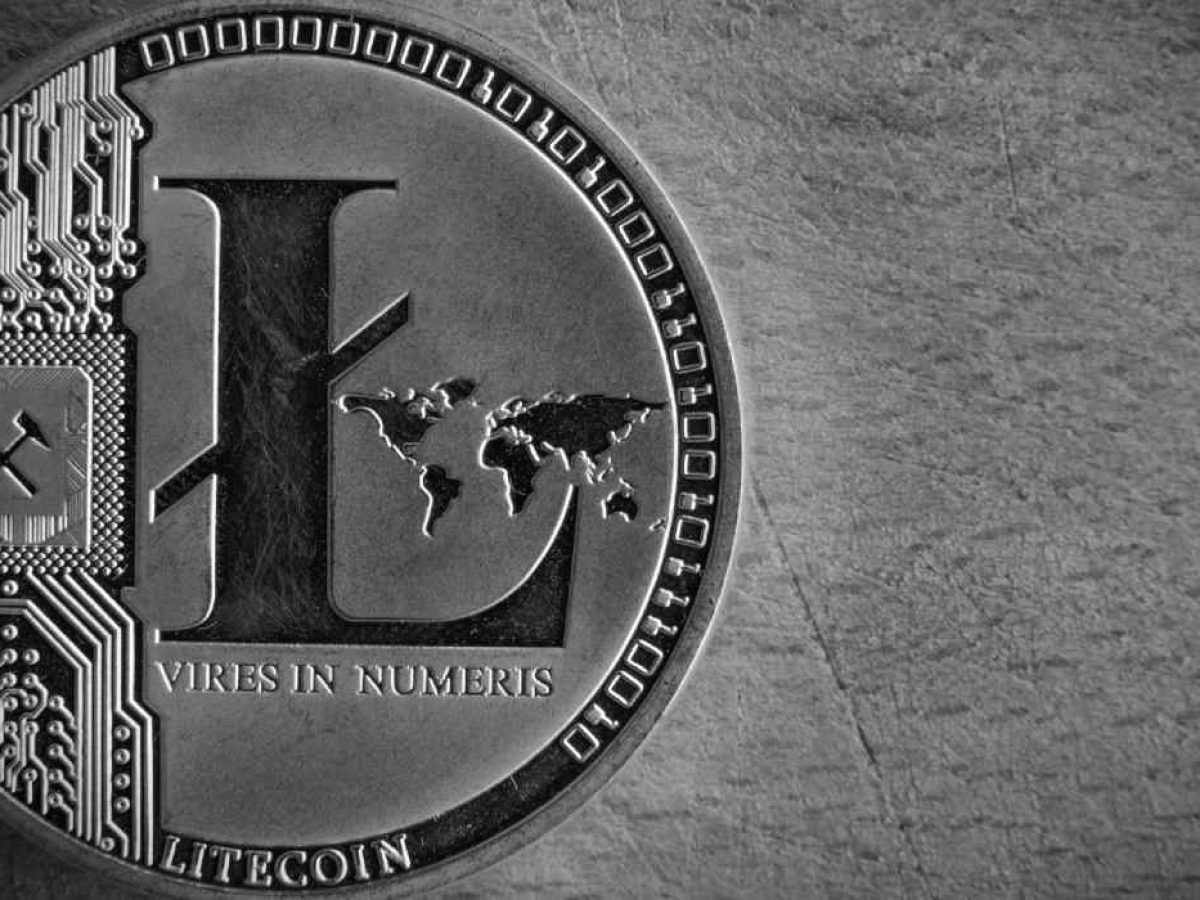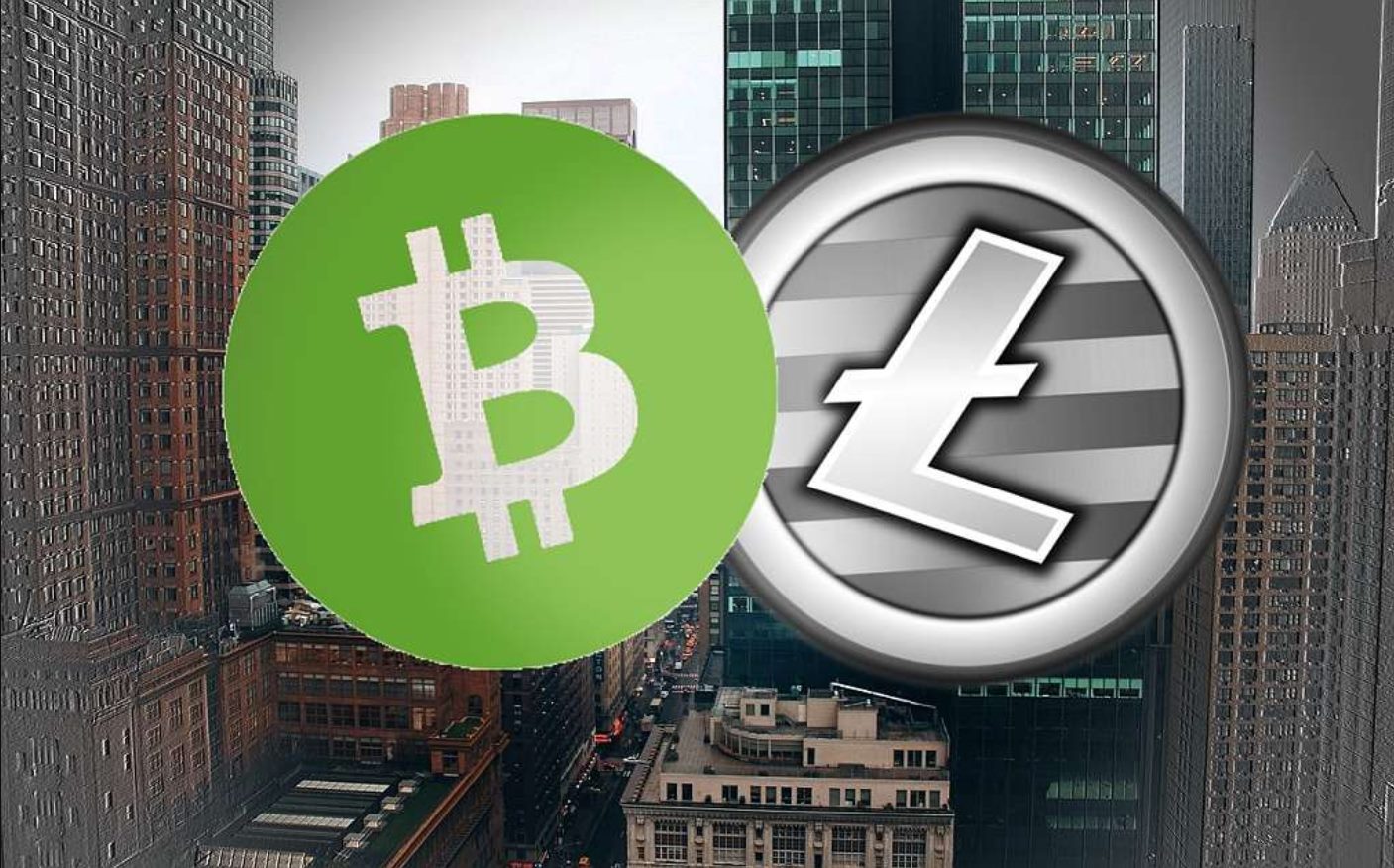Introduction
Welcome to the world of cryptocurrencies, where digital assets are reshaping the financial landscape. Among the myriad of cryptocurrencies available today, one that stands out is Litecoin. Launched in 2011, Litecoin has gained significant popularity and is now considered one of the top digital currencies in the market.
But have you ever wondered who made Litecoin? Who is the mastermind behind its creation? In this article, we will delve into the origins of Litecoin, explore its development, and shed light on the creator behind this groundbreaking digital currency.
The birth of Litecoin was not just a stroke of luck or the result of a random event. It was the brainchild of a skilled and visionary individual who wanted to address some of the limitations of the first cryptocurrency, Bitcoin.
Litecoin was designed to offer faster transaction processing times and a more efficient mining process. Its aim was to provide a digital currency that could complement Bitcoin, offering users a more agile and accessible option for everyday transactions.
This article will take you on a journey to discover the creator of Litecoin and uncover the motivations and accomplishments that led to its development. Join us as we delve into the fascinating story behind Litecoin and the innovator who brought it to life.
The Origins of Litecoin
The origins of Litecoin can be traced back to the early days of cryptocurrencies, when Bitcoin was the sole digital currency dominating the market. Bitcoin, created by the pseudonymous figure known as Satoshi Nakamoto, introduced the concept of decentralized digital currency and revolutionized the way we perceive and use money.
While Bitcoin gained traction and grew in popularity, it also revealed some limitations. One of the key drawbacks was its transaction processing time. Bitcoin transactions typically took around 10 minutes to be confirmed, which could be seen as slow in a fast-paced digital world.
It was against this backdrop that Litecoin emerged onto the scene in October 2011. Created by an individual going by the name Charlie Lee, Litecoin aimed to address these limitations and offer a digital currency that would be faster and more efficient than Bitcoin.
Charlie Lee, a former Google engineer, drew inspiration from Bitcoin and aimed to create a complementary cryptocurrency that would enhance the overall ecosystem. Litecoin was designed to be a peer-to-peer digital currency that could facilitate instant transactions with lower fees.
The underlying technology behind Litecoin is similar to that of Bitcoin. It operates on a decentralized network, utilizing blockchain technology to record and verify transactions. However, there are several distinct features that set Litecoin apart.
One of the key differentiators of Litecoin is its faster transaction confirmation time. While Bitcoin takes around 10 minutes for a block to be added to the blockchain, Litecoin reduces this time to just 2.5 minutes. This significantly speeds up the transaction process and allows for quicker confirmations.
Additionally, Litecoin makes use of a different hashing algorithm called “Scrypt” compared to Bitcoin’s “SHA-256”. This algorithm is designed to be memory-intensive, making it more resistant to ASIC mining, which can lead to more decentralization of the mining process.
The launch of Litecoin provided a new alternative to Bitcoin, offering a faster and more accessible digital currency. Since its inception, Litecoin has gained a strong following and has become a prominent player in the cryptocurrency market. Its success can be attributed to the vision and innovation of its creator, Charlie Lee.
Now that we have explored the origins of Litecoin, let’s delve deeper into the life and contributions of Charlie Lee, the mastermind behind this groundbreaking digital currency.
The Creator: Charlie Lee
Behind every successful project lies an exceptional individual, and in the case of Litecoin, that individual is Charlie Lee. Born in the Ivory Coast and raised in the United States, Charlie Lee is a computer scientist, blockchain enthusiast, and the creator of Litecoin.
With a strong background in technology, Charlie Lee obtained his Bachelor’s and Master’s degrees in Computer Science from the Massachusetts Institute of Technology (MIT) and worked as a software engineer at prominent companies like Google and Coinbase.
It was during his time at Google that Charlie first encountered Bitcoin. The concept of a decentralized digital currency fascinated him, and he recognized the potential it held for transforming the traditional financial system. This newfound fascination sparked Charlie’s interest in blockchain technology, leading him to become an influential figure in the cryptocurrency space.
Charlie’s vision for Litecoin was to create a faster and more efficient alternative to Bitcoin. He wanted to address the scalability and transaction speed issues that Bitcoin faced, while maintaining the integrity and security of the underlying blockchain technology.
After months of dedicated work and research, Charlie released Litecoin in October 2011. The creation of Litecoin was not driven by personal gain or the pursuit of fame; instead, it was born out of a genuine desire to contribute to the development and advancement of cryptocurrencies.
Charlie’s deep understanding of blockchain technology and his commitment to innovation allowed him to develop Litecoin as a viable digital currency. His expertise in cryptography and software engineering ensured that Litecoin had a strong foundation and the potential to thrive in the competitive cryptocurrency market.
As the creator of Litecoin, Charlie played a pivotal role in shaping the cryptocurrency industry. His contributions extended beyond the technical aspects of Litecoin itself. Charlie actively engaged with the community, providing guidance and insights to promote the adoption and understanding of cryptocurrencies.
Charlie’s dedication to his creation and his commitment to transparency and accountability in the cryptocurrency space earned him the respect and admiration of many. He became one of the prominent voices in the industry, advocating for the responsible use of cryptocurrencies and educating users about their benefits and potential risks.
With his strong technical background, passion for blockchain technology, and relentless pursuit of improvement, Charlie created not just a digital currency, but a legacy that continues to shape the world of cryptocurrencies to this day.
Now that we have explored the fascinating background of Charlie Lee, let’s delve deeper into his motivations behind creating Litecoin and how it has evolved since its launch.
Charlie Lee’s Background and Contributions
Charlie Lee’s background as a computer scientist and his deep passion for technology laid the foundation for his significant contributions to the world of cryptocurrencies. With extensive experience in the industry, Charlie brought his expertise to the development and promotion of Litecoin.
After completing his education at MIT, Charlie joined Google as a software engineer. During his time at Google, he gained valuable experience and honed his skills, working on projects that utilized cutting-edge technologies.
Charlie’s curiosity led him to discover Bitcoin in 2011, which immediately captured his attention. Recognizing the potential of cryptocurrencies to revolutionize the financial landscape, he embarked on a journey to explore and contribute to the nascent industry.
In addition to creating Litecoin, Charlie made significant contributions to the broader cryptocurrency community. He became an active member of the Bitcoin community, sharing insights, discussing technical aspects, and promoting the adoption of cryptocurrencies.
One of Charlie’s notable contributions to the community was Segregated Witness (SegWit) – a protocol upgrade that aimed to improve the scalability of Bitcoin. SegWit was implemented successfully in Litecoin in 2017 before being adopted by Bitcoin later that year.
Charlie’s implementation of SegWit in Litecoin showcased his technical expertise and commitment to solving critical issues faced by cryptocurrencies. This enhancement allowed for faster and more efficient transaction processing, further solidifying Litecoin’s position in the market.
Charlie also actively participated in conferences and events related to cryptocurrencies, sharing his knowledge and experiences with fellow enthusiasts and experts. His presence helped create awareness and fostered a deeper understanding of the potential of digital currencies.
Throughout his journey, Charlie has consistently emphasized the importance of responsible and secure cryptocurrency usage. He has encouraged users to exercise caution and educate themselves about the potential risks associated with cryptocurrencies.
Recognizing the need for an easy-to-use wallet, Charlie created the Litecoin Core wallet, enabling users to securely store and manage their Litecoins. This contribution played a vital role in enhancing the user experience and facilitating the widespread adoption of Litecoin.
Charlie’s dedication to the development of Litecoin and the cryptocurrency industry as a whole has earned him the respect and admiration of individuals within the community. His technical prowess and commitment to innovation have established him as a thought leader and influencer in the blockchain space.
As we continue to explore the journey of Litecoin, let’s delve into the motivations that drove Charlie to create this trailblazing digital currency.
The Motivation Behind Litecoin
The creation of Litecoin was fueled by the motivation to address some of the limitations and challenges faced by Bitcoin, the pioneering cryptocurrency. Charlie Lee’s vision for Litecoin was to provide a faster, more efficient, and accessible digital currency that could complement Bitcoin’s role in the financial ecosystem.
One of the key motivations behind Litecoin was to improve transaction processing times. Bitcoin, while revolutionary in its concept, had transaction times of around 10 minutes, which could be considered slow for everyday transactions. Charlie saw an opportunity to create a digital currency that could offer faster confirmations, allowing for near-instantaneous transactions.
Furthermore, by creating Litecoin, Charlie aimed to provide a more energy-efficient alternative to Bitcoin’s mining process. Bitcoin mining, powered by the energy-intensive SHA-256 algorithm, had become increasingly dominated by specialized hardware and large mining operations. Charlie sought to enable more decentralization in the mining process by implementing the Scrypt hashing algorithm, which was designed to be more resistant to ASIC (Application-Specific Integrated Circuit) mining.
Another motivation for Litecoin was to offer lower transaction fees compared to Bitcoin. Charlie recognized that affordable transaction fees would be essential for the widespread adoption of digital currencies, especially for micro-transactions and everyday usage. By reducing fees, Litecoin aimed to become an accessible option for individuals seeking a reliable and economical digital currency.
Additionally, Charlie’s motivation was driven by the desire to contribute to the overall growth and development of the cryptocurrency industry. As a blockchain enthusiast and advocate, he wanted to create a digital currency that could inspire innovation, encourage user adoption, and foster a sense of community within the evolving landscape.
The vision behind Litecoin was not to compete with Bitcoin but rather to coexist and complement it. Charlie recognized the value of Bitcoin as the groundbreaking pioneer, and he saw Litecoin as an extension that could offer unique advantages and capabilities.
By providing a faster transaction confirmation time, an energy-efficient mining process, and lower transaction fees, Litecoin aimed to serve as a practical digital currency for everyday use. Charlie’s motivation was centered around building a solid and reliable alternative to traditional fiat currencies, paving the way for a world where decentralized cryptocurrencies could coexist with existing financial systems.
Now that we have explored the motivations behind Litecoin, let’s delve into its development journey and early reception in the cryptocurrency market.
Development of Litecoin
The development of Litecoin began in 2011, with Charlie Lee spearheading the project to create a digital currency that would overcome the challenges faced by Bitcoin. Drawing from his technical expertise and experience in the cryptocurrency space, Charlie set out to build a faster, more efficient, and accessible alternative.
Using Bitcoin’s source code as a starting point, Charlie made several modifications to create Litecoin. One of the significant changes was the implementation of the Scrypt hashing algorithm, which allowed for more efficient mining and greater decentralization. This choice made it more feasible for individual miners to participate in the network, instead of relying solely on specialized hardware.
In addition to the algorithm change, Charlie adjusted the parameters of Litecoin to differentiate it from Bitcoin. These adjustments included a four times larger block generation time of 2.5 minutes, resulting in faster confirmations of transactions. The total supply of Litecoins was set at 84 million, four times higher than Bitcoin’s limit of 21 million, ensuring an ample supply for adoption and use.
Throughout the development process, Charlie actively sought feedback from the cryptocurrency community and remained transparent about his intentions. He launched Litecoin on October 13, 2011, releasing the code on GitHub for others to examine, contribute, and collaborate.
Upon its launch, Litecoin gained attention and support from cryptocurrency enthusiasts who recognized its potential. The community began mining and trading Litecoins, establishing a foundation for the currency’s growth and acceptance in the market.
Litecoin’s development continued through ongoing updates and improvements. Charlie and the Litecoin development team worked diligently to address security concerns, enhance network functionality, and ensure the stability and reliability of the digital currency.
One significant milestone in the development of Litecoin was its successful activation of Segregated Witness (SegWit) in 2017. This protocol upgrade aimed to improve scalability, reduce transaction fees, and enhance the potential for future innovations on the platform. Litecoin was among the first cryptocurrencies to adopt SegWit, demonstrating its commitment to technical advancement and scalability solutions.
The development of Litecoin did not stop at the hands of its creator. Charlie actively encouraged community involvement and contributions from developers, ensuring the project’s continued growth and resilience. This community-driven approach fostered a sense of ownership and collaboration, making Litecoin not just Charlie’s creation but a collective effort.
As the development of Litecoin progressed, its reputation as a reliable and efficient digital currency grew. It became recognized for its speed, low transaction fees, and secure blockchain. Litecoin’s success drew the attention of investors and traders, propelling its market presence and establishing it as one of the prominent cryptocurrencies in the industry.
Now that we’ve explored the development of Litecoin, let’s examine its launch and early reception in the cryptocurrency market.
The Launch and Early Reception of Litecoin
Litecoin officially launched on October 13, 2011, when the code was released on GitHub by its creator, Charlie Lee. The launch of Litecoin introduced a new digital currency that aimed to address the limitations of Bitcoin and provide a faster, more efficient alternative for users.
From its inception, Litecoin gained attention and support from the cryptocurrency community. The community saw the potential of Litecoin’s improved transaction processing times, lower fees, and energy-efficient mining algorithm. This reception helped establish a solid foundation for Litecoin’s growth and adoption.
Upon its launch, Litecoin was embraced by early adopters and enthusiasts who recognized its value and sought to participate in its mining and trading. This enthusiasm led to the gradual expansion of the Litecoin network as more users joined the ecosystem.
Litecoin’s early reception was also influenced by its close association with Bitcoin. As one of the first alternative cryptocurrencies to gain significant traction, Litecoin was seen as a complementary digital currency to Bitcoin, rather than a direct competitor. This relationship helped foster a sense of collaboration and innovation within the cryptocurrency community.
The ease of use and accessibility of Litecoin also contributed to its positive reception. Its user-friendly wallet and seamless integration with various exchanges made it attractive to individuals seeking a straightforward way to engage with cryptocurrencies.
Litecoin’s market presence grew steadily during its early days, with an increasing number of exchanges listing it for trading. This availability contributed to its liquidity and allowed users to easily buy and sell Litecoins, further driving its adoption and market value.
One key moment in Litecoin’s early journey was its inclusion on the Mt. Gox exchange in 2013. Mt. Gox, the largest Bitcoin exchange at the time, added Litecoin to its platform, providing a significant boost to Litecoin’s visibility and market reach.
The launch and early reception of Litecoin set the stage for its ongoing development and growth. As more individuals and businesses recognized the benefits of Litecoin, its market capitalization increased, and it solidified its position as a prominent digital currency.
Litecoin’s early success can largely be attributed to the vision and innovation of its creator, Charlie Lee. By addressing the limitations of Bitcoin and offering improvements in transaction speed and fees, Litecoin captured the interest of cryptocurrency enthusiasts and established itself as a viable and valuable digital currency.
As we continue our exploration of Litecoin, we will delve into its evolution over the years and Charlie Lee’s transition from actively leading the project.
The Evolution of Litecoin
Since its launch in 2011, Litecoin has undergone a series of developments and changes that have shaped its evolution as a digital currency. As a result, Litecoin has grown in popularity and significance within the cryptocurrency industry, becoming one of the leading cryptocurrencies available today.
One notable aspect of Litecoin’s evolution is its commitment to technological advancements. Over the years, Litecoin has implemented various updates and improvements to enhance its functionality, security, and network scalability.
One significant milestone in Litecoin’s evolution was the activation of Segregated Witness (SegWit) in May 2017. SegWit introduced a protocol upgrade that increased block capacity, improved transaction speed, and reduced fees. This upgrade positioned Litecoin as one of the early adopters of SegWit technology and demonstrated its commitment to addressing scalability concerns.
Another key development in Litecoin’s evolution was the adoption of the Lightning Network (LN) in 2018. The Lightning Network is a second-layer payment protocol that enables faster and cheaper transactions by leveraging off-chain channels. With the implementation of the Lightning Network, Litecoin gained even greater transaction scalability, making it more suitable for micro-payments and everyday transactions.
Litecoin has also seen integration with various merchant services and payment processors, allowing users to easily spend their Litecoins for goods and services. The increasing acceptance of Litecoin as a form of payment has contributed to its growth as a practical and usable digital currency.
Additionally, Litecoin has experienced ongoing improvements in its mining process. The integration of the Scrypt algorithm, which favors memory over processing power, has made Litecoin mining more accessible and resistant to hardware centralization. This aspect has further enhanced Litecoin’s decentralization and encouraged wider participation in the mining community.
Litecoin’s evolution is not limited to technological advancements alone. The cryptocurrency has also expanded its reach through partnerships and collaborations. For example, Litecoin has established strategic partnerships with companies such as the cryptocurrency payment platform, Aliant Payment, and the blockchain-based gaming platform, Atari Token. These partnerships have helped broaden adoption and increase Litecoin’s utility in real-world applications.
Furthermore, Litecoin has made efforts to enhance its user experience through the development of user-friendly wallets and interfaces. With wallets available across a variety of platforms, including desktop and mobile devices, Litecoin has made it easier for users to securely store and manage their Litecoins.
As Litecoin continues to evolve, its community plays a vital role in shaping its future. The active community of developers, miners, traders, and enthusiasts contributes to the ongoing improvement and growth of the network through collaborations, feedback, and peer-to-peer support.
With a history of innovation, resilience, and adaptability, Litecoin has solidified its position as a prominent player in the world of cryptocurrencies. Its evolution reflects the dedication, vision, and continuous commitment to advancing the capabilities and accessibility of digital currencies.
As we move forward, we will explore Charlie Lee’s transition from actively leading Litecoin and the current state of this pioneering digital currency.
Charlie Lee’s Transition from Litecoin
Charlie Lee’s journey with Litecoin took an intriguing turn when he made the decision to step away from actively leading the project. In a move that surprised many, Charlie announced in December 2017 that he had sold and donated his entire holdings of Litecoin. This decision was driven by his desire to prevent a conflict of interest and allow Litecoin to grow and prosper independently.
Charlie’s decision to divest himself of Litecoin holdings was met with both praise and criticism within the cryptocurrency community. While some commended his commitment to integrity and dedication to Litecoin’s success, others raised concerns about the potential impact of his departure on the future development and direction of the project.
Despite stepping away from day-to-day operations, Charlie remained involved with Litecoin as a vocal supporter and advisor. He continued to share his insights and knowledge, offering guidance to the Litecoin development team and the broader community.
Charlie’s departure from active leadership allowed other passionate individuals to step up and contribute to Litecoin’s growth. With the support of a dedicated community and a skilled development team, the project continued its evolution and remained an important player in the cryptocurrency landscape.
Since Charlie’s transition, the Litecoin Foundation, an organization dedicated to advancing and promoting Litecoin, has taken on a more prominent role in guiding the project. Led by a team of experienced professionals, the Litecoin Foundation focuses on fostering adoption, driving innovation, and ensuring the long-term success of Litecoin.
Although Charlie has relinquished his role as the figurehead of Litecoin, his contributions and legacy continue to have a lasting impact. His vision and dedication played a crucial role in the early success and development of Litecoin, and his departure allowed the community and project to grow and flourish in new directions.
Charlie’s transition from Litecoin reflects the decentralized nature of cryptocurrencies and the importance of a strong and vibrant community. While his absence from the project may have shifted the dynamics, Litecoin remains resilient and continues to adapt to the changing needs and demands of the market.
As Litecoin evolves, the project stands as a testament to the power of collaboration, innovation, and the incredible possibilities that blockchain and cryptocurrencies offer. The future of Litecoin, shaped by community engagement and ongoing development efforts, holds great potential for further growth and adoption.
Now, let’s delve into the current state of Litecoin and explore its position in the ever-evolving landscape of digital currencies.
Conclusion
Litecoin, born out of the visionary mind of Charlie Lee, has emerged as a prominent digital currency and a testament to the potential of cryptocurrencies. From its origins as a faster and more efficient alternative to Bitcoin, Litecoin has grown and evolved, overcoming challenges and gaining recognition within the cryptocurrency community.
Charlie Lee, a skilled computer scientist and blockchain enthusiast, laid the foundation for Litecoin’s success. His technical expertise, innovative thinking, and commitment to the advancement of cryptocurrencies led to the creation of a digital currency that offered tangible improvements over its predecessors.
The launch of Litecoin marked a significant milestone, as it introduced a faster transaction confirmation time, lower fees, and an energy-efficient mining process. These features contributed to Litecoin’s early reception and adoption, propelling it into the spotlight of the cryptocurrency market.
Throughout its journey, Litecoin has undergone significant developments and advancements. Implementing upgrades like Segregated Witness and the Lightning Network, Litecoin showcased its commitment to improving scalability, speed, and usability.
Charlie Lee’s decision to step away from actively leading Litecoin showcased his dedication to the project’s independence and growth. While his departure created a shift in leadership, the Litecoin community and the dedicated team of developers and enthusiasts have ensured its continued progress and adaptation in a rapidly changing industry.
Today, Litecoin remains a popular and widely accepted digital currency, with merchants and businesses increasingly embracing its use for everyday transactions. Its legacy as one of the earliest and most successful altcoins serves as a testament to the ongoing potential and long-term viability of cryptocurrencies.
As blockchain technology continues to revolutionize various sectors, Litecoin stands as a pioneering force, pushing the boundaries of what digital currencies can achieve. Its commitment to innovation, user experience, and community engagement has solidified its position as a valuable and resilient asset in the ever-evolving landscape of cryptocurrencies.
As we look ahead, the evolution of Litecoin continues, driven by the passion and collective efforts of its community. From its humble beginnings to its current prominence, Litecoin exemplifies the transformative power of decentralized currencies and the potential for a future where financial transactions are efficient, secure, and accessible to all.







